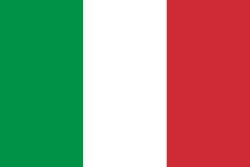| Italy at the 1952 Summer Olympics | |
|---|---|
 | |
| IOC code | ITA |
| NOC | Italian National Olympic Committee |
| Website | www |
| in Helsinki, Finland July 19–August 3, 1952 | |
| Competitors | 231 (208 men, 23 women) in 19 sports |
| Flag bearer | Miranda Cicognani |
| Medals Ranked 5th |
|
| Summer Olympics appearances (overview) | |
| Other related appearances | |
| 1906 Intercalated Games | |
Italy competed at the 1952 Summer Olympics in Helsinki, Finland. 231 competitors, 208 men and 23 women, took part in 114 events in 19 sports. [1]